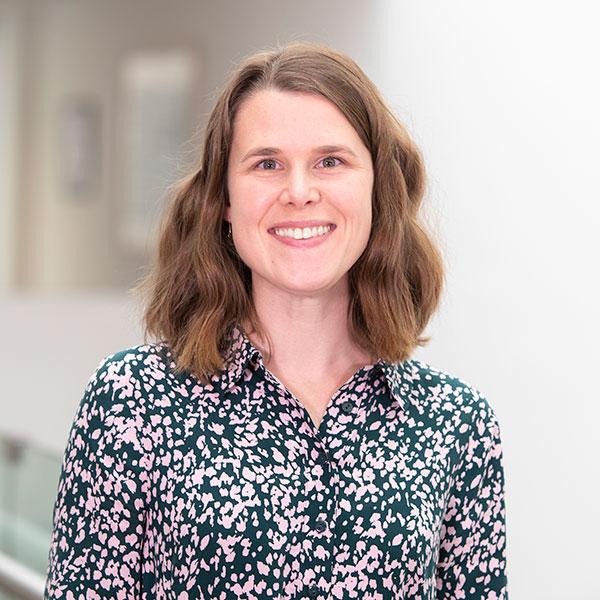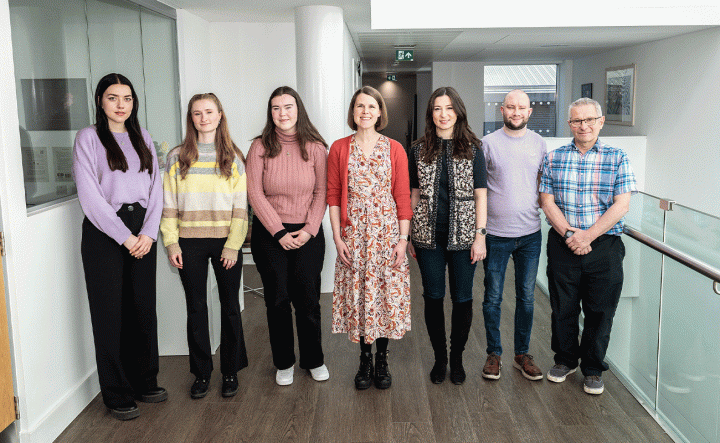Hannah Long Research Group
Gene Regulation in Human Craniofacial Development and Disease

Research in a Nutshell
How multicellular organisms, with their elaborate pattern and diverse array of cell-types, arise during development from a single cell is a fascinating and complex process. Given that all cells in a developing human embryo share the same genome, differential utilisation of a limited set of genes is key for driving the observed cellular diversity. To orchestrate cell-type specific patterns of gene expression, non-coding regulatory elements called enhancers act as regulatory switches, turning genes on and off in time and space during development. Our lab investigates mechanisms of gene regulation in the context of craniofacial development, and how enhancer perturbation can lead to human congenital craniofacial disorders.
The vertebrate face largely develops from a transient embryonic cell-type called the cranial neural crest. To study human facial development we utilise both in vitro differentiation of human embryonic stem cells to cranial neural crest cells (CNCCs) and animal models coupled to genome-editing, epigenomic analysis and imaging based approaches. In recent work, we focused on understanding the regulatory mechanisms driving expression of an important developmental transcription factor called SOX9 whose perturbation causes craniofacial dysmorphology. We identified clusters of extreme long-range enhancers over a million base pairs upstream of the SOX9 gene that are active in CNCCs, exhibit features of synergistic gene regulation and whose ablation recapitulates aspects of a human craniofacial disorder.
Leveraging this interesting regulatory domain, we are now investigating how chromosomal structure relates to gene activity using genetic engineering and imaging approaches. We are also investigating how multiple enhancers act in combination both within clusters of enhancers and across a regulatory locus, and are seeking to identify sequence features and position effects that influence enhancer combinatorial behaviour. Ultimately our work will further our understanding of enhancer function during normal development, and help us to predict how non-coding genetic mutations may impact developmental gene expression and drive disease phenotypes.

People |
|
| Dr Hannah Long | Group Leader |
| Dr Nick Younger | Postdoctoral scientist |
| Kirsty Uttley |
Postdoctoral Scientist - MRC Transition Fellow |
| Kasia Milto | Edinburgh Clinical Academic Track (ECAT) Fellow (with Jenny Nichols) |
| Carlo De Angelis | Research Assistant |
| Verena Obermuller | PhD Student (with Joe Marsh) |
| Hannah Juellig | ERAMUS+ student |
Contact
Publications
- Long HK, Osterwalder M, Welsh IC, Hansen K, Davies JOJ, Liu Y, Koska M, Adams AT, Aho R, Arora N, Ikeda K, Williams R, Sauka-Spengler T, Porteus M, Mohun T, Dickel DE, Swigut T, Hughes JR, Higgs DR, Visel A, Selleri L, Wysocka J. (2020) Loss of Extreme Long-Range Enhancers in Human Neural Crest Drives a Craniofacial Disorder. Cell Stem Cell 27, 1–19.
- Greenberg RS, Long HK, Swigut T, and Wysocka J. Single amino acid change underlies distinct roles of H2A.Z subtypes in human syndrome. (2019) Cell 178 (6): 1421-1436.e24
- Bowen ME, McClendon J, Long HK, Sorayya A, Van Nostrand JL, Wysocka J, Attardi LD. The Spatiotemporal Pattern and Intensity of p53 Activation Dictates Phenotypic Diversity in p53-Driven Developmental Syndromes. (2019) Dev Cell S1534-5807(19)30387-9
- Long HK*, Sims D*, Heger A, Blackledge NP, Kutter C, Wright M, Grutzner F, Odom DT, Patient R, Ponting CP, and Klose RJ (* co-first author). (2013) Epigenetic conservation at gene regulatory elements revealed by non-methylated DNA profiling in seven vertebrates. eLife 2, e00348
- Long HK*, Prescott SL*, Wysocka J (* co-first author). Ever-Changing Landscapes: Transcriptional Enhancers in Development and Evolution. (2016) Cell 167(5): 1170–1187.
- Chen LF*, Long HK*, Park M, Swigut T, Boettiger AN‡, Wysocka J‡ (* co-first author; ‡ co-corresponding author). Structural elements facilitate extreme long-range gene regulation at a human disease locus. Molecular Cell (2023).
Full publication list can be found on Research Explorer: Hannah Long — University of Edinburgh Research Explorer
Collaborations
- Professor Alistair Boettiger, Stanford University
-
Professor Jenny Nichols , University of Edinburgh
-
Dr Joe Rainger, University of Edinburgh
-
Dr Catia Attanasio, KU Leuven
-
Dr Joe Marsh, University of Edinburgh
-
Dr Greg Kudla, University of Edinburgh
Partners and Funders
- Medical Research Council
Scientific Themes
Mechanisms of gene regulation, long-range enhancer function, chromatin structure, cranial neural crest cells, human craniofacial development, congenital disorders
Technology Expertise
Human pluripotent stem cells, in vitro differentiation, epigenomics, enhancer reporter assays, genome editing, in vitro and in vivo human disease modelling, microCT


